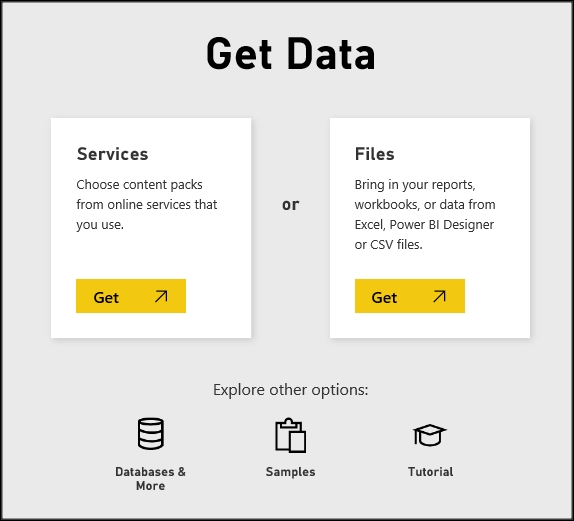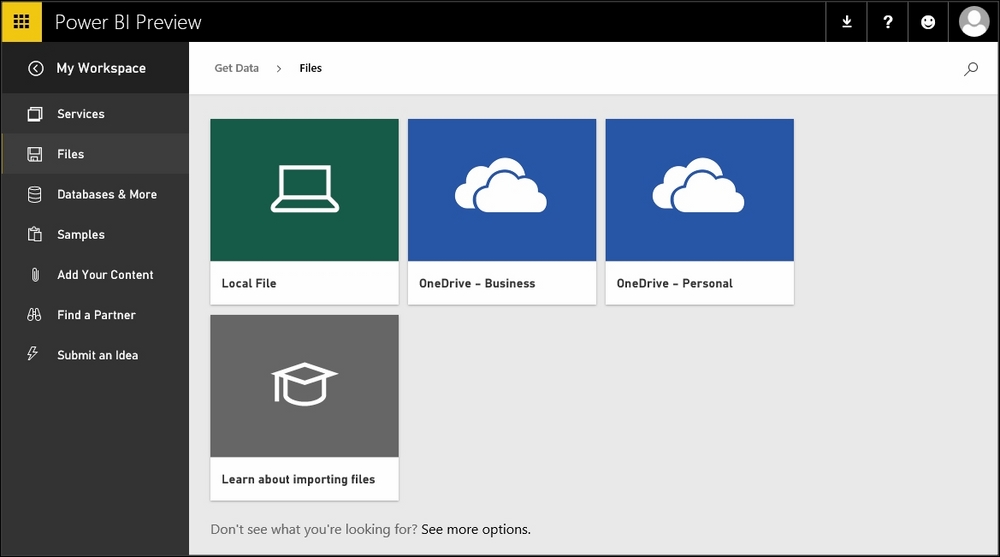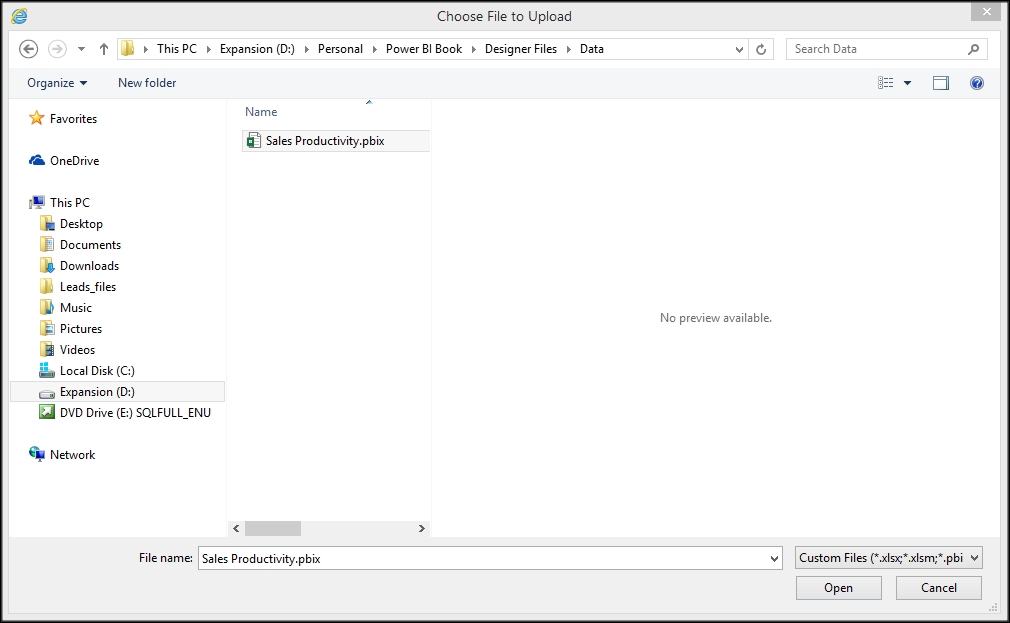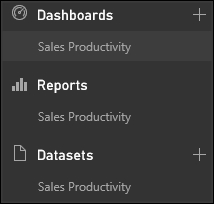Now that we have access to our Power BI for the Office 365 site, let's upload our sales productivity Power BI Designer file. To do this, we need to make sure that we are able to access the file locally.
Here is how you upload a Power BI Designer file to the site:
In the main site page window, select the Get Data link located in the bottom-left corner and select the Files option:

Once on the Get Data screen, select Local File. Files can also be stored in a Business or Personal OneDrive location:

Once the site page window changes to the Power BI Designer file.
After the Choose File to Upload window opens, browse to the
Sales Productivity.pbixPower BI file to begin the upload:
Once the file upload is complete, navigate back to My Workspace and locate the new Sales Productivity entries under Dashboards, Reports, and Datasets on the left-hand side of the site page before the Get Data link:

Select the Reports heading to open the first report. Open the page...



